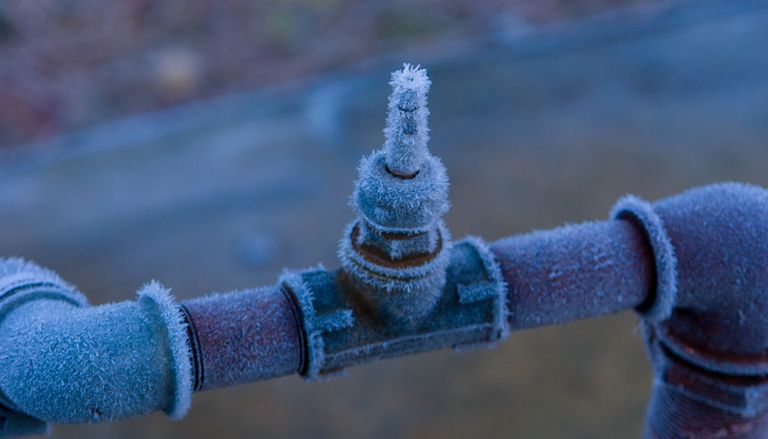Essential Strategies for Avoiding Frozen Plumbing in Cold Weather
Essential Strategies for Avoiding Frozen Plumbing in Cold Weather
Blog Article
What are your ideas regarding 6 Ways to Prevent Frozen Pipes?

Winter can damage your plumbing, particularly by freezing pipelines. Here's just how to stop it from occurring and what to do if it does.
Intro
As temperatures drop, the risk of icy pipes boosts, potentially resulting in pricey repair work and water damages. Understanding exactly how to stop icy pipes is crucial for house owners in cold climates.
Avoidance Tips
Protecting vulnerable pipes
Cover pipes in insulation sleeves or use heat tape to safeguard them from freezing temperature levels. Concentrate on pipes in unheated or external areas of the home.
Heating methods
Keep indoor rooms appropriately heated, specifically locations with plumbing. Open up cupboard doors to allow cozy air to distribute around pipes under sinks.
Just how to determine icy pipes
Look for lowered water flow from faucets, uncommon odors or sounds from pipes, and visible frost on revealed pipes.
Long-Term Solutions
Structural changes
Think about rerouting pipes away from outside walls or unheated locations. Include additional insulation to attic rooms, basements, and crawl spaces.
Updating insulation
Purchase high-grade insulation for pipelines, attics, and wall surfaces. Proper insulation aids maintain constant temperatures and lowers the risk of icy pipes.
Securing Exterior Plumbing
Yard pipes and exterior taps
Disconnect and drain garden hose pipes before wintertime. Set up frost-proof spigots or cover exterior taps with shielded caps.
Recognizing Icy Pipes
What triggers pipelines to freeze?
Pipes freeze when exposed to temperatures below 32 ° F (0 ° C) for extended durations. As water inside the pipes ices up, it increases, taxing the pipe wall surfaces and possibly causing them to break.
Risks and problems
Icy pipes can lead to water supply disturbances, property damages, and expensive fixings. Burst pipelines can flood homes and create comprehensive architectural damage.
Indications of Frozen Piping
Determining icy pipes early can avoid them from breaking.
What to Do If Your Pipes Freeze
Immediate activities to take
If you believe icy pipes, maintain faucets available to relieve pressure as the ice thaws. Use a hairdryer or towels soaked in hot water to thaw pipes slowly.
Verdict
Protecting against frozen pipes requires positive steps and fast reactions. By comprehending the reasons, indicators, and safety nets, homeowners can safeguard their pipes throughout winter.
5 Ways to Prevent Frozen Pipes
Drain Outdoor Faucets and Disconnect Hoses
First, close the shut-off valve that controls the flow of water in the pipe to your outdoor faucet. Then, head outside to disconnect and drain your hose and open the outdoor faucet to allow the water to completely drain out of the line. Turn off the faucet when done. Finally, head back to the shut-off valve and drain the remaining water inside the pipe into a bucket or container. Additionally, if you have a home irrigation system, you should consider hiring an expert to clear the system of water each year.
Insulate Pipes
One of the best and most cost-effective methods for preventing frozen water pipes is to wrap your pipes with insulation. This is especially important for areas in your home that aren’t exposed to heat, such as an attic. We suggest using foam sleeves, which can typically be found at your local hardware store.
Keep Heat Running at 65
Your pipes are located inside your walls, and the temperature there is much colder than the rest of the house. To prevent your pipes from freezing, The Insurance Information Institute suggests that you keep your home heated to at least 65 degrees, even when traveling. You may want to invest in smart devices that can keep an eye on the temperature in your home while you’re away.
Leave Water Dripping
Moving water — even a small trickle — can prevent ice from forming inside your pipes. When freezing temps are imminent, start a drip of water from all faucets that serve exposed pipes. Leaving a few faucets running will also help relieve pressure inside the pipes and help prevent a rupture if the water inside freezes.
Open Cupboard Doors
Warm your kitchen and bathroom pipes by opening cupboards and vanities. You should also leave your interior doors ajar to help warm air circulate evenly throughout your home.

We had been introduced to that article about Preventing and dealing with frozen pipes through someone on a different blog. Sharing is caring. Helping others is fun. We take joy in your readership.
Set An Appointment Report this page